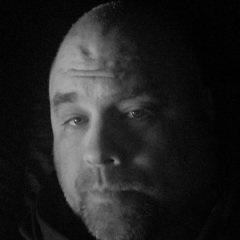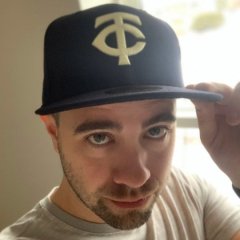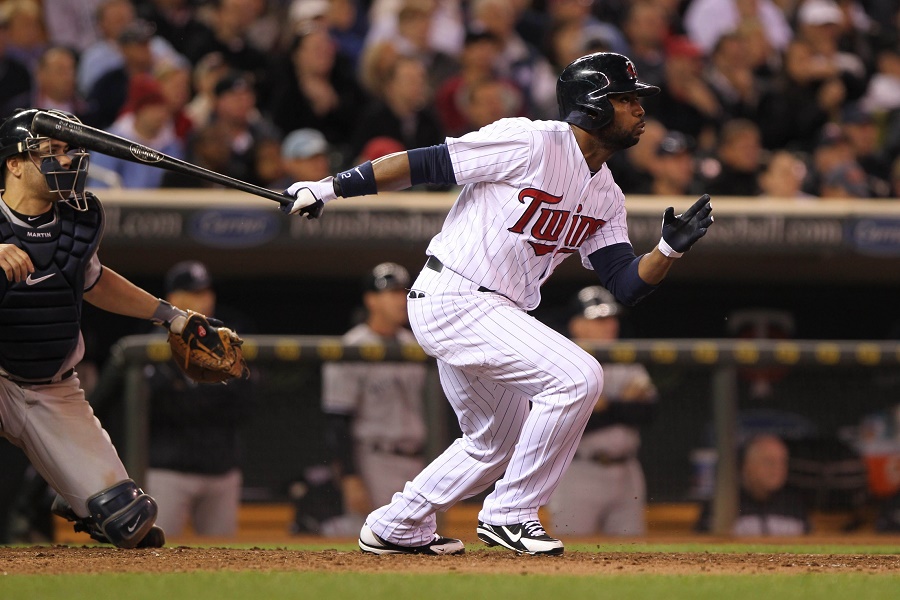Search the Community
Showing results for tags 'michael cuddyer'.
-

First Round Busts: The Twins Struck Out Three Consecutive Years
Cody Christie posted an article in Twins
Minnesota had a decent run of first round picks in the early 1990s. Torii Hunter, Todd Walker, Mark Redman and Michael Cuddyer were all drafted in consecutive years leading into the three picks discussed below. All those players would make it to the big leagues and there are multiple All-Stars on th...- 13 comments
-
- adam johnson
- bj garbe
-
(and 3 more)
Tagged with:
-
I don’t think it’s burying the lede here to note that Harmon Killebrew’s signature is going to be number one on this list. He’s got some of the greatest penmanship we’ve seen in any era, and it was a craft he took great pride in. You’ll often hear stories from more recent players where they’ll quip...
- 3 comments
-
- minnesota twins
- harmon killebrew
- (and 3 more)
-
The last month, we have been highlighting some of the best players in the Twins 60-season history. Today, we enter the 21st century. Who makes the team of the '00s? These should all be familiar names for Twins fans.Tom Kelly suffered through some rough Twins seasons but when he retired after the 200...
- 12 replies
-
- joe mauer
- justin morneau
-
(and 3 more)
Tagged with:
-
Tom Kelly suffered through some rough Twins seasons but when he retired after the 2001 season, he left the team in a good spot. Ron Gardenhire took over and the team won six division titles in a decade. As we have seen in other decades, much of that credit for this decade belongs to the offense. The...
- 12 comments
-
- joe mauer
- justin morneau
-
(and 3 more)
Tagged with:
-

Gleeman & The Geek, Ep 409: 2019 Winter Meltdown (with Michael Cuddyer)
John Bonnes posted an article in Twins
-
Aaron and John are at TwinsDaily's Winter Meltdown, interviewing Michael Cuddyer and Twins beat writers Dan Hayes, Betsy Helfand and Do-Hyoung Park. You can listen by downloading us from iTunes, Stitcher, iHeartRadio or find it at GleemanAndTheGeek.com. You can listen by downloading us from iTunes,...
-
Cuddyer, who played in 1,139 games for Twins and was inducted into the team's Hall of Fame in 2017, is known for many things: His dimpled smile. His cannon arm. His magic tricks in the clubhouse. His slugging prowess. From my view, there are two specific elements of Cuddyer the player that are worth...
-
Today at Twins Daily we are excited to announce that Michael Cuddyer will be our special guest at the Winter Meltdown, now less than two weeks away. (Last-chance tickets go on sale Tuesday morning.) For a couple of reasons, Cuddyer feels like a fitting choice to have on-stage as we look ahead to t...
-
This week's Almanac features former Twins Sal Butera, Keith Atherton, Michael Cuddyer, Jim Perry, Bob Casey, Kirby Puckett, Ken Landreaux, Mickey Hatcher, Luis Tiant, and Dan Gladden, and Minnesotan major leaguers Mike Kingery, Tom Quinlan, Jake Esch, and Bill Carney. March 25, 1874 Birthdate of Bil...
- 14 replies
-
- kirby puckett
- michael cuddyer
-
(and 3 more)
Tagged with:
-
March 25, 1874 Birthdate of Bill Carney It’s the birthdate of Bill Carney, born 144 years ago in St. Paul. He played outfield in his only two major league games with the Chicago Cubs on August 22, 1904 at age 30, going 0-for-7 in a doubleheader. He played 16 professional seasons altogether, as bot...
- 14 comments
-
- kirby puckett
- michael cuddyer
-
(and 3 more)
Tagged with:
-
On Monday on the back fields of the Lee County Sports Complex, Brent Rooker played first base for the Chattanooga Lookouts work group against the AA work group of the Boston Red Sox. Long-time big leaguer Chris Heisey came down from big league camp and introduced himself to the Twins 2017 draft pick...
- 17 comments
-
- brent rooker
- michael cuddyer
-
(and 2 more)
Tagged with:
-
FORT MYERS - 2017 was a fantastic year for Twins prospect Brent Rooker. After being drafted in 2016 by the Twins, he went back to Mississippi State where he won the SEC's Triple Crown, a feat not accomplished in about 30 years. He was drafted again by the Twins, this time 37 rounds higher, and diced...
- 17 replies
-
- brent rooker
- michael cuddyer
-
(and 2 more)
Tagged with:
-
This list is obviously subjective, but I’d love to hear from you. What are your favorite ads produced by the Twins or featuring Twins players? Laurel Krahn (@wintwins on Twitter) has a wonderful playlist on YouTube with more than 100 Twins commercials. But even the Internet has its limitations. I’m...
- 20 comments
-
- torii hunter
- corey koskie
-
(and 3 more)
Tagged with:
-
Reports are that Morneau will officially retire and become a special assistant in the Twins. The team has yet to make the announcement official but that could come as Twins Fest approaches. Under the Twins new front office, the club has added former players like Torii Hunter, Michael Cuddyer and LaT...
- 30 comments
-
- justin morneau
- torii hunter
- (and 3 more)
-
Justin Morneau hasn’t appeared in a big league game since 2016 and it sounds like he is officially ready to hang up his cleats. His 14-year MLB career seemed destined for greatness before multiple concussions limited near the end of his career. There was some talk of Morneau joining a club last seas...
- 30 replies
-
- justin morneau
- torii hunter
- (and 3 more)
-
Win Expectancy (via Fangraphs) Top 3 Twins per WPA: Berrios .281 | Dozier .148 | Castro .084 We’ve seen several Twins break out of slumps around the same time these last couple weeks, I guess it was Berrios’ turn tonight. Jose entered the evening with a 6.18 ERA and 1.52 WHIP over six second-half s...
- 19 comments
-
- jose berrios
- alan busenitz
-
(and 2 more)
Tagged with:
-
Jose Berrios was due for another phenomenal performance. He pitched seven shutout innings as the Twins beat the Diamondbacks 5-0 on the night No. 5, Michael Cuddyer, was inducted into the Twins Hall of Fame. Miguel Sano left this game with soreness in his left shin.Win Expectancy (via Fangraphs) Dow...
- 19 replies
-
- jose berrios
- alan busenitz
-
(and 2 more)
Tagged with:
-
March 26, 1989 Twins Trade Atherton for Castillo The Twins trade pitcher Keith Atherton to the Cleveland ballclub for outfielder Carmelo Castillo. Atherton’s name is attached to one of the more dubious records in team history as one of the record five Twins pitchers to work the eighth inning i...
- 2 comments
-
- bob casey
- herb carneal
-
(and 3 more)
Tagged with:
-
All Major League organizations bring back players in an “assistant” type of role. The Twins have done that for guys like Rod Carew, Kent Hrbek and Tony Oliva. They represent the organization at events like Twins Fest. They may show up for a while at spring training and other special events. That is...
- 81 comments
-
- michael cuddyer
- torii hunter
-
(and 3 more)
Tagged with:
-
On Monday morning, the Minnesota Twins made it official that Michael Cuddyer, Torii Hunter and LaTroy Hawkins were coming back to the organization. No, they aren’t going to come out of retirement. Though all three could probably still contribute in some way on the field, they are going to attempt to...
- 81 replies
-
- michael cuddyer
- torii hunter
-
(and 3 more)
Tagged with:
-
3/27/73: 37 year old future Twins HOFer, Jim Perry, okays trade to Detroit. 3/27/05: Iconic Twins public address announcer of 44 years, Bob Casey, passes away at age 79. Tony Oliva, Kent Hrbek, Dan Gladden and Jack Morris would serve as pallbearers at his funeral. 3/28/96: On the final day of spring...
- 11 comments
-
- denard span
- michael cuddyer
-
(and 3 more)
Tagged with:
-
And here is The Twins Almanac for the week of March 27th to April 2nd, 2016. 3/27 is the birthday of Michael Cuddyer, born in 1979 in Norfolk, VA. He was the Twins’ 1st round draft pick out of high school in 1997. In 2009 he hit for the cycle (5/22), and homered twice in the same inning (8/23). He...
- 11 replies
-
- denard span
- michael cuddyer
-
(and 3 more)
Tagged with:
-
And here is The Twins Almanac for the week of March 27th to April 2nd, 2016. 3/27 is the birthday of Michael Cuddyer, born in 1979 in Norfolk, VA. He was the Twins’ 1st round draft pick out of high school in 1997. In 2009 he hit for the cycle (5/22), and homered twice in the same inning (8/23). He...
- 3 comments
-
- twins almanac
- michael cuddyer
-
(and 3 more)
Tagged with:
-
In the summer of 2004, the Twins were in the midst of a run for their third straight AL Central crown. The sudden success on the field meant the club was in the routine of drafting later rather than earlier in the first round of baseball's amateur draft. That June the team focused on shortstop and a...
- 13 replies
-
- trevor plouffe
- michael cuddyer
-
(and 3 more)
Tagged with:
-
Baseball America wrote this scouting report about Plouffe as he entered the draft. "He has a wiry frame, soft hands and fluid middle-infield actions in the mold of Robin Yount." They went on to say, "His range and arm strength are a notch below Matt Bush, the nation's top prep shortstop, but Plouffe...
- 13 comments
-
- trevor plouffe
- michael cuddyer
-
(and 3 more)
Tagged with:
-
Recent Articles
-
Recent Posts
-
3
Hey, look here
Whoooooooo Ranked ProspectsTurangChourioQueroFrelickBillWilburSpankyEdgarJohn NOOOOOOOOOO...
By Brock Beauchamp
Last post date -
0
Can Jorge López Rediscover His First-Half Success?
The Twins made a much-needed trade for an all-star reliever at last year’s deadline, but what they got fell short of e...
By Lou Hennessy
Last post date
-
Blog Entries
-
Who's Online (See full list)
- There are no registered users currently online



























